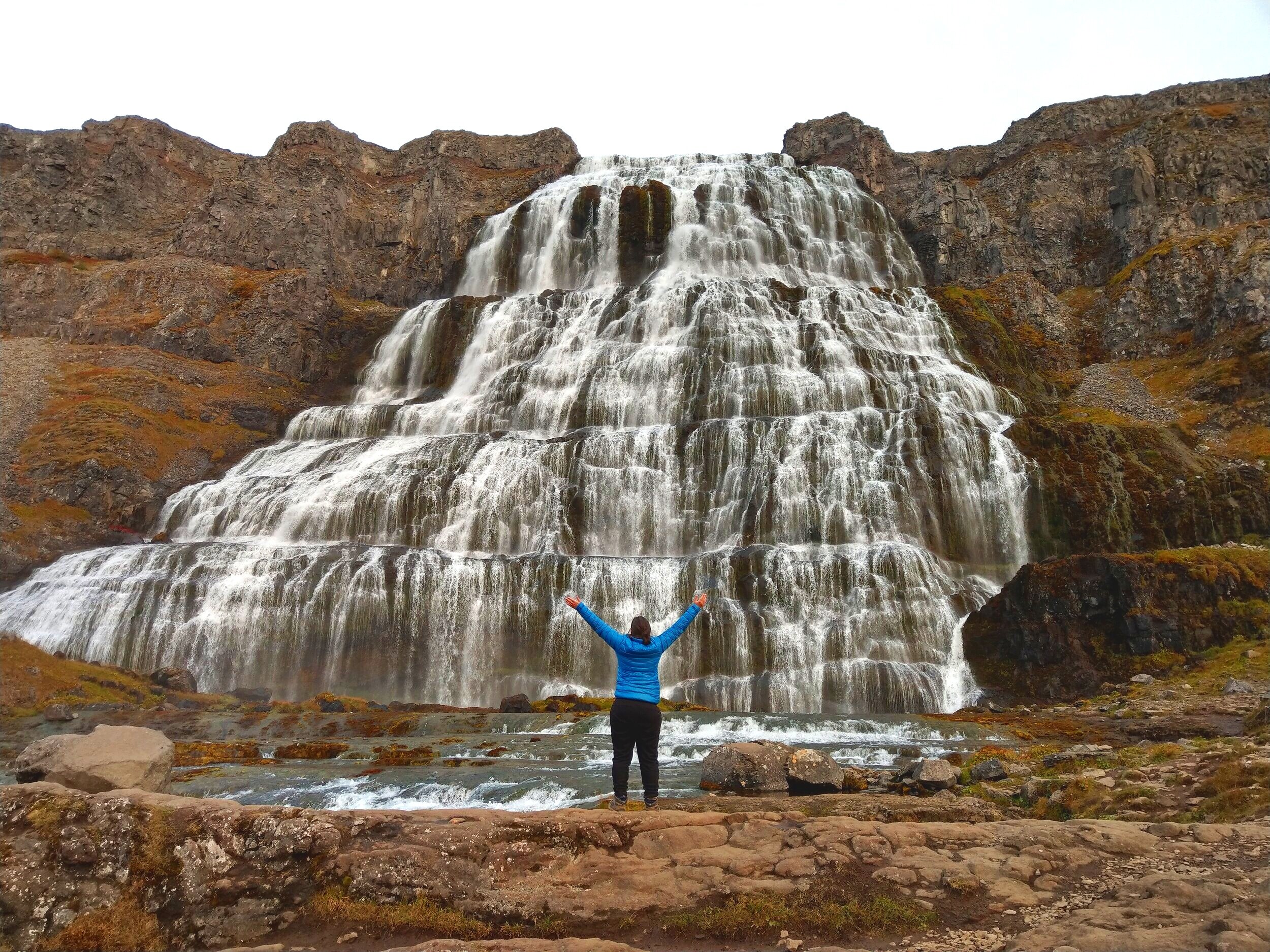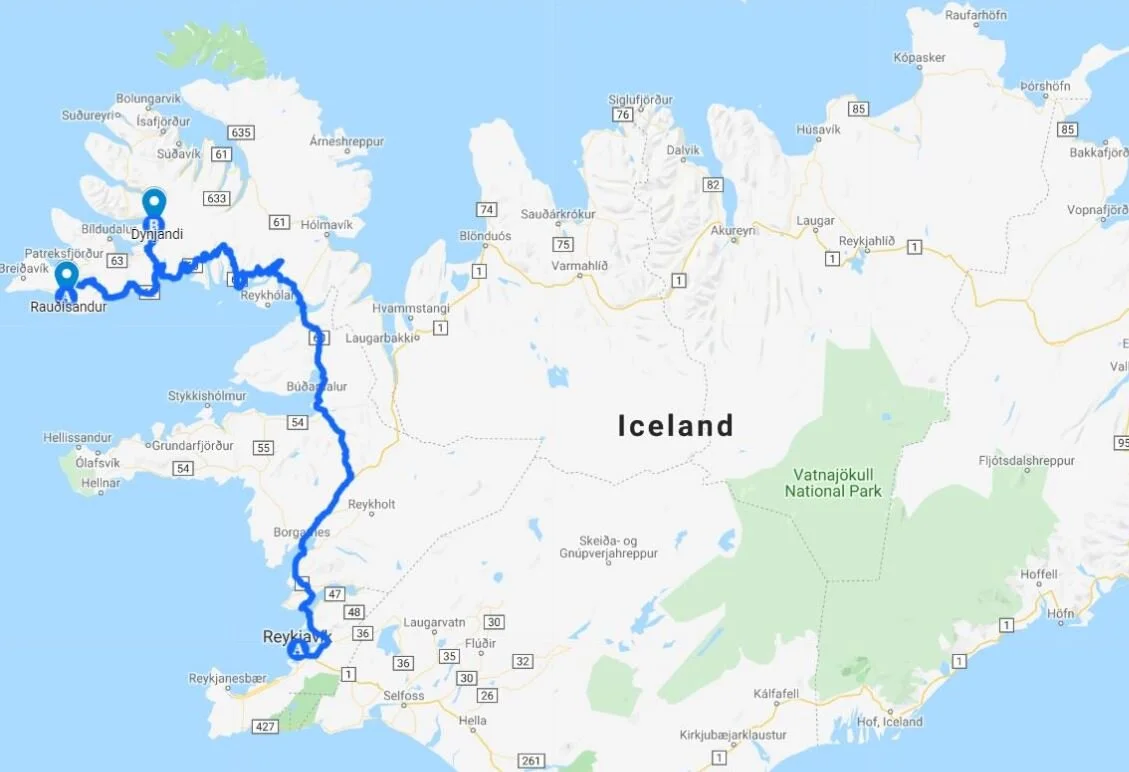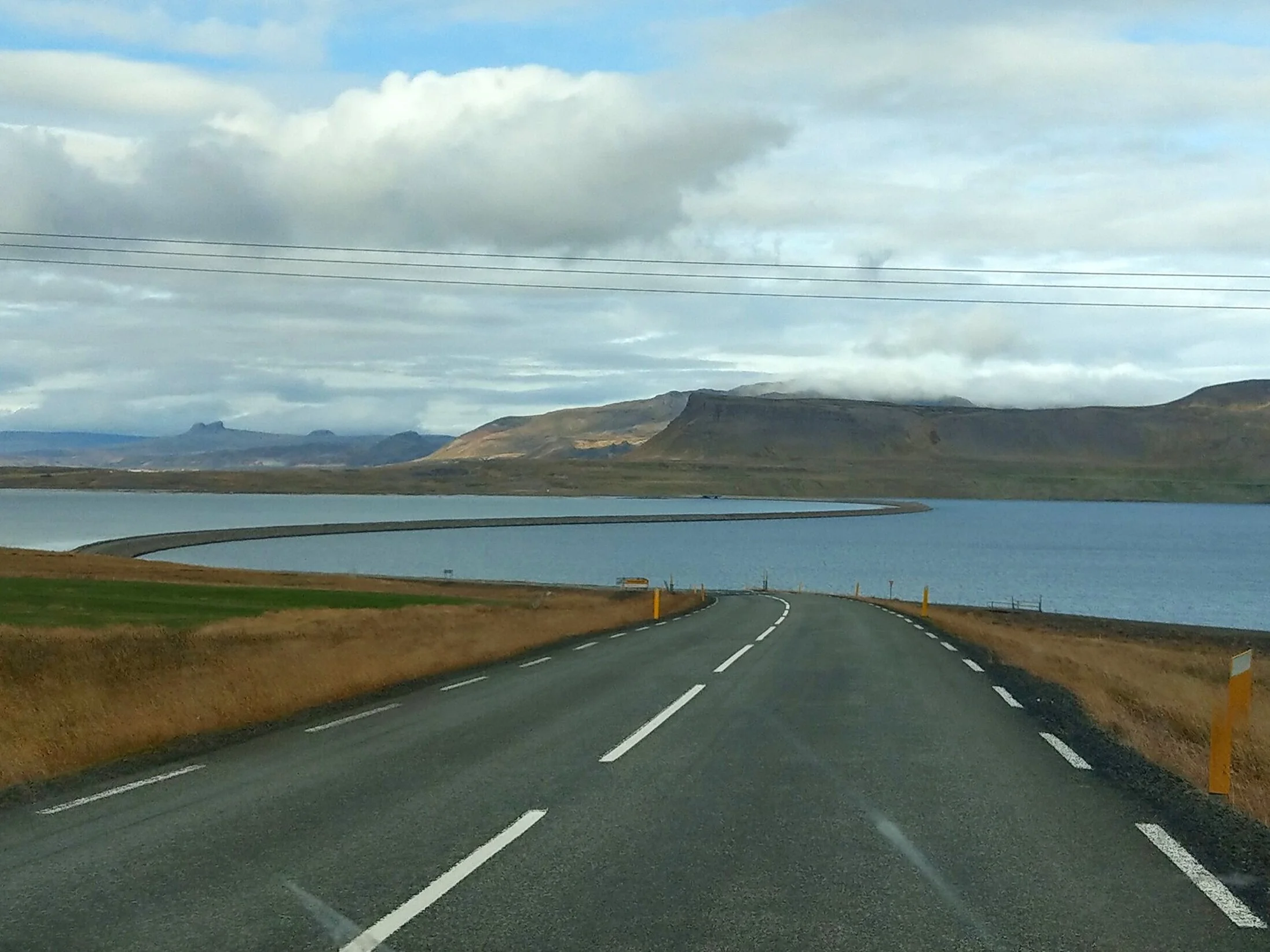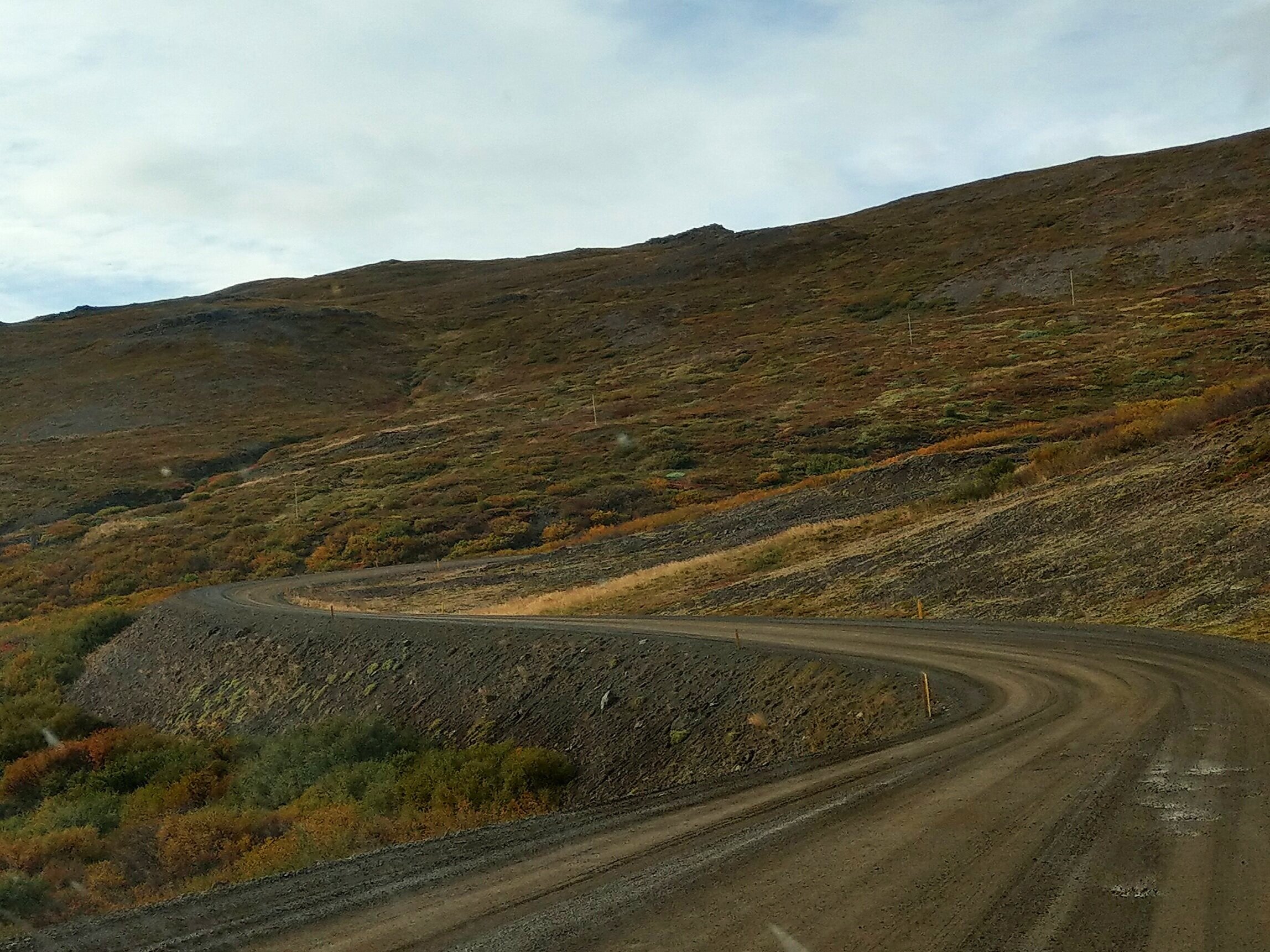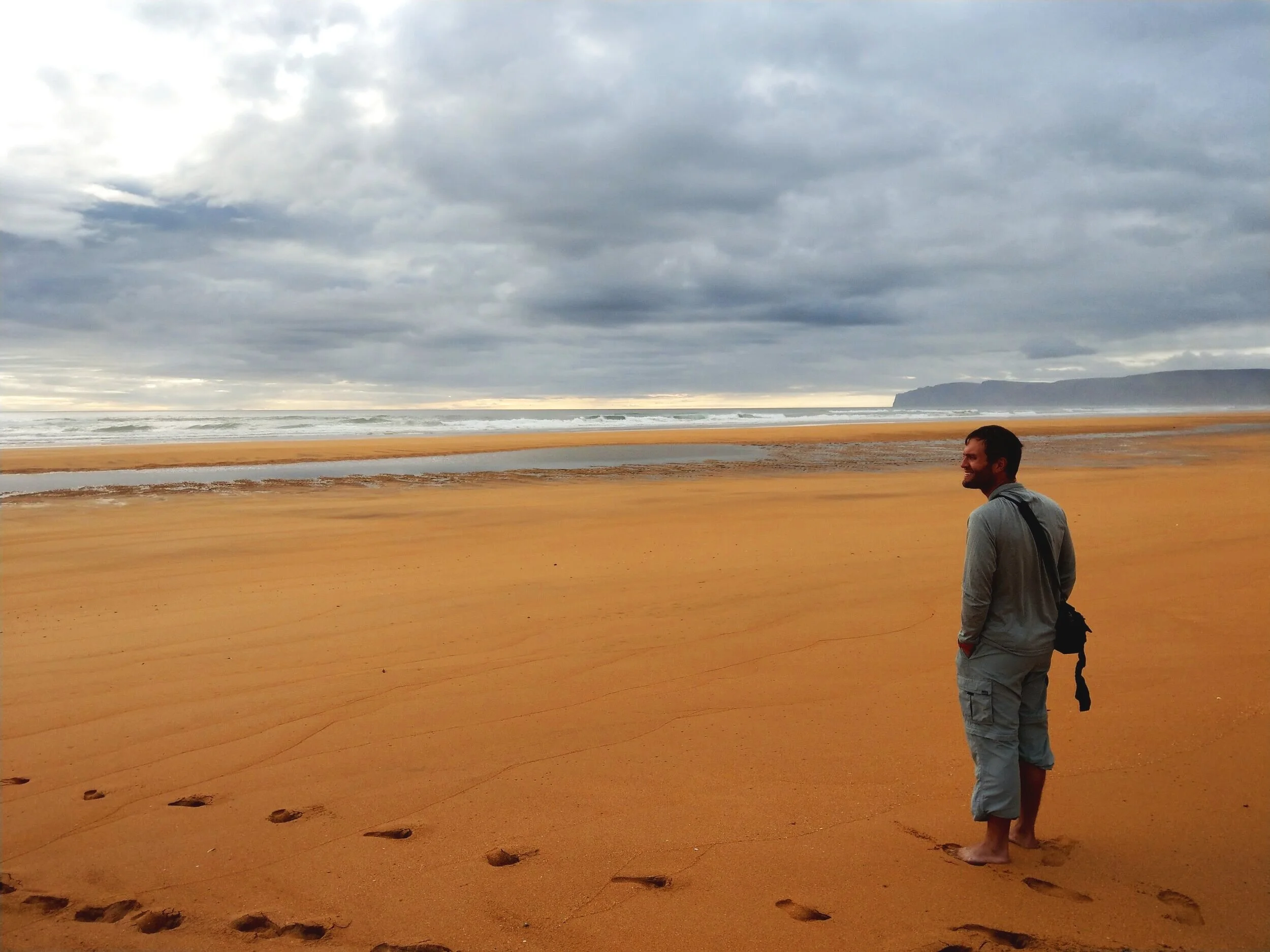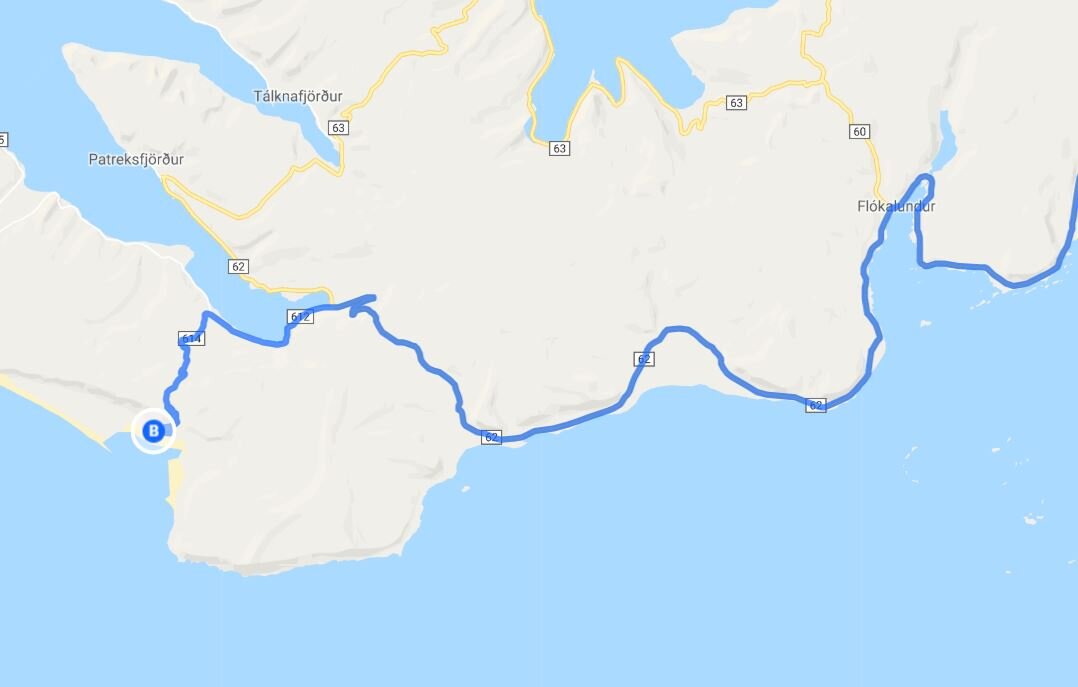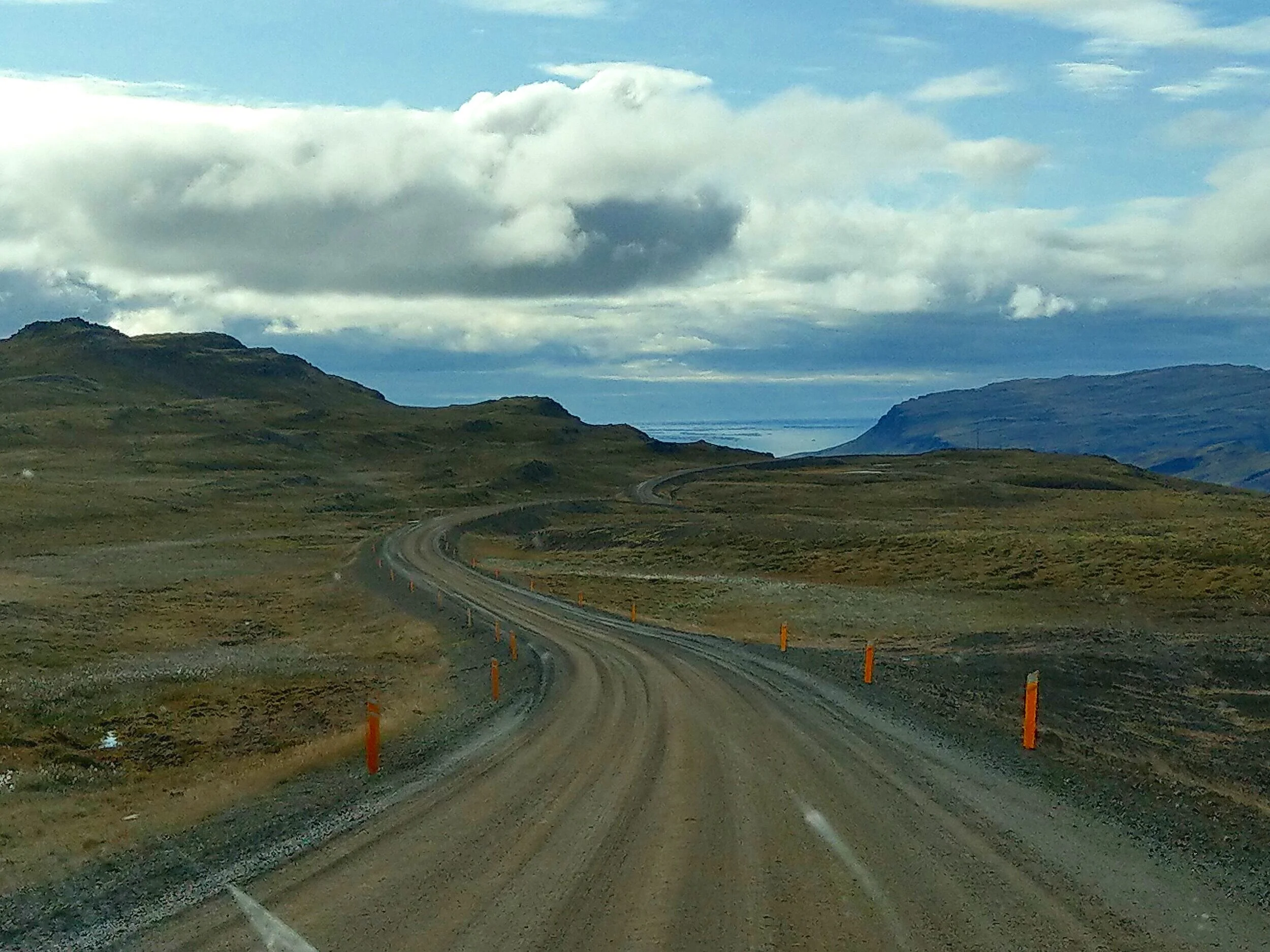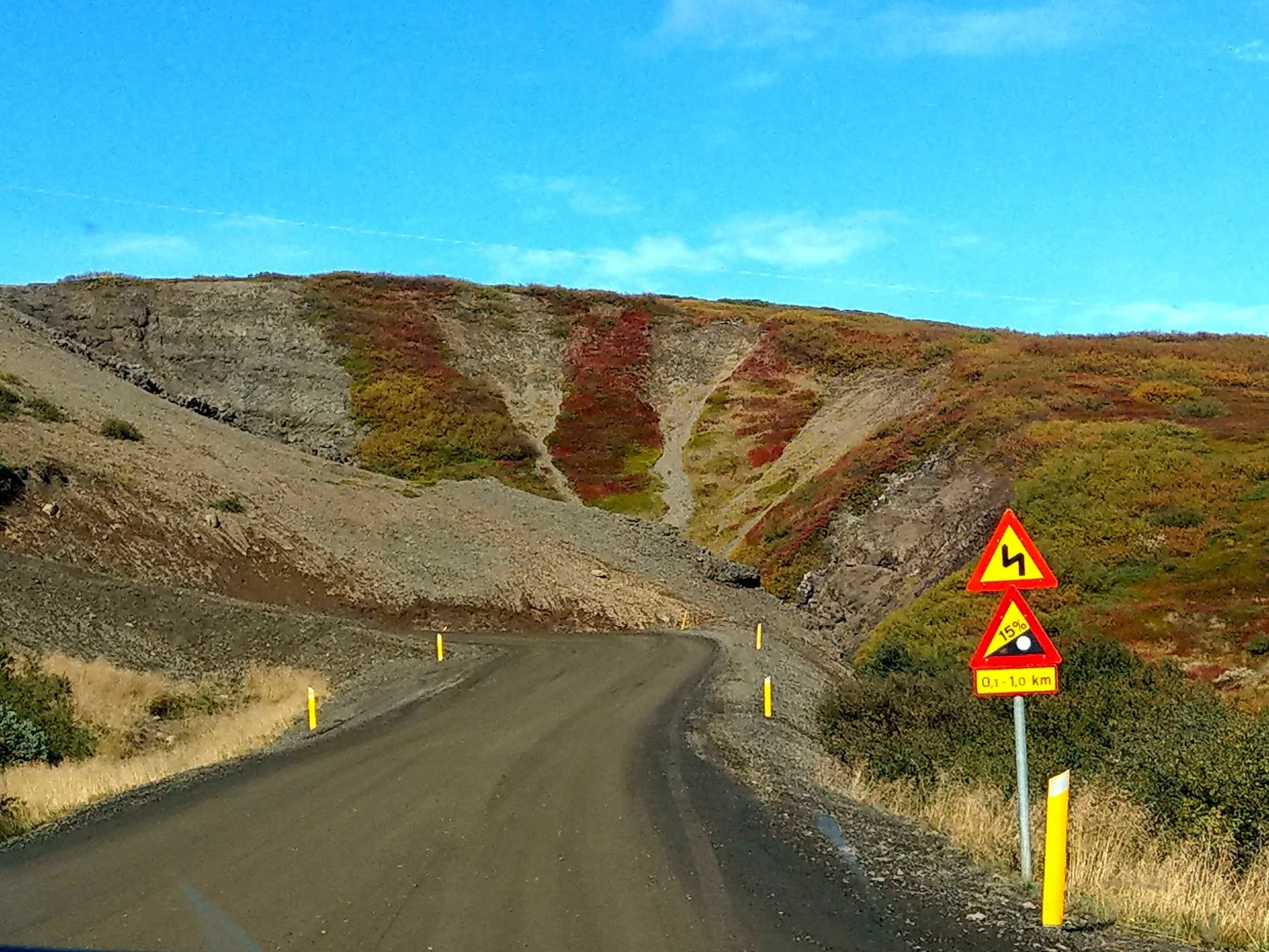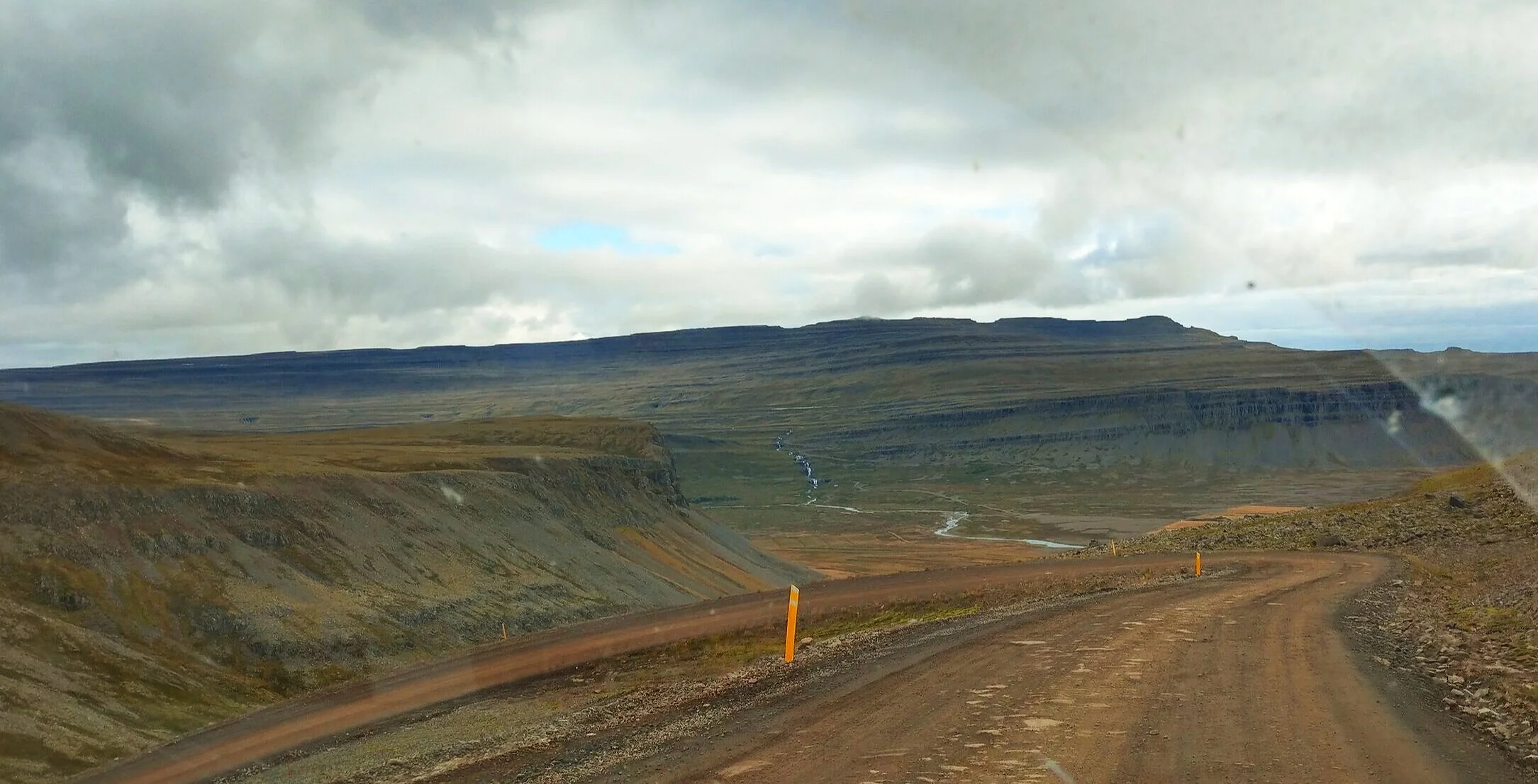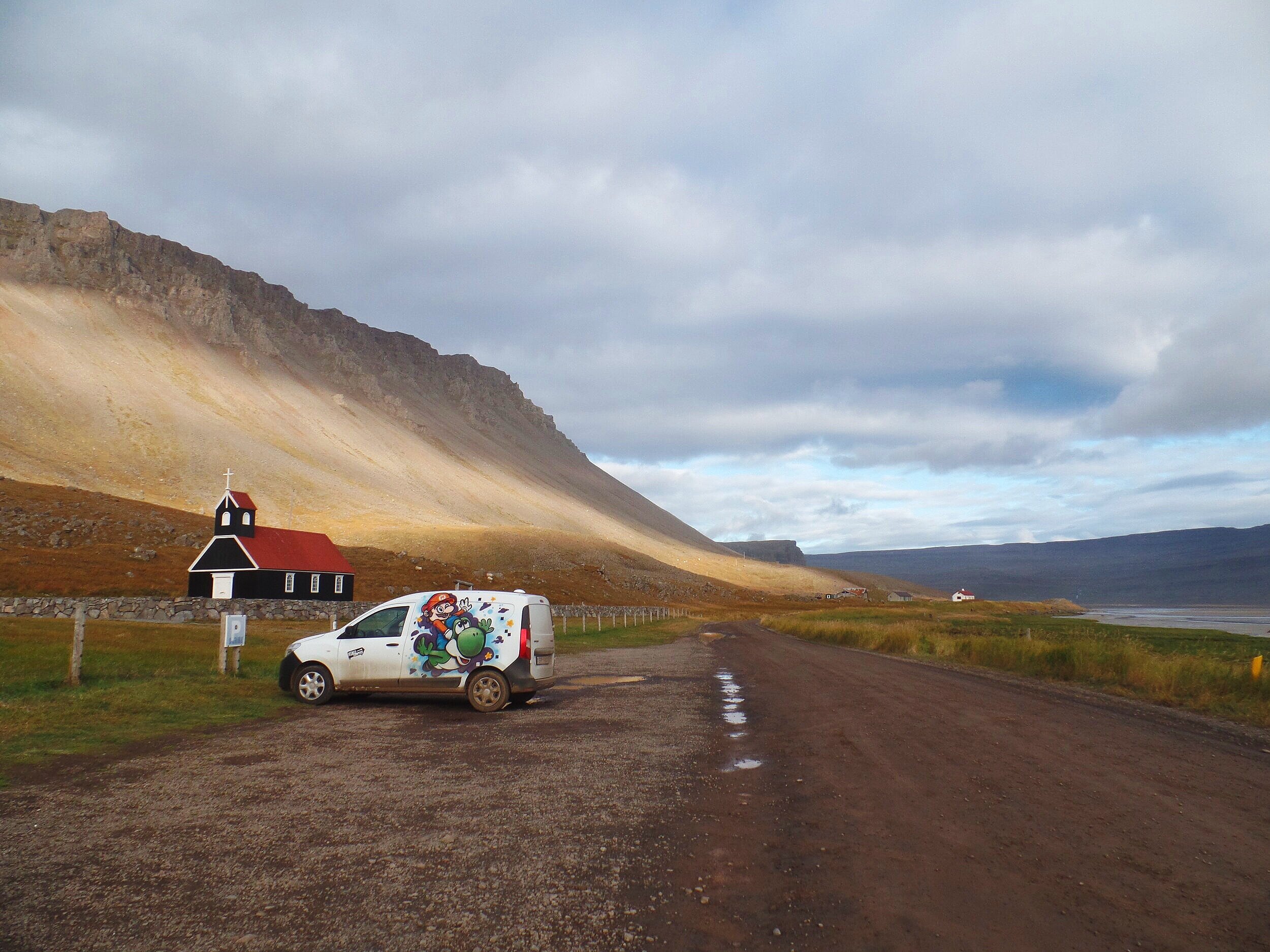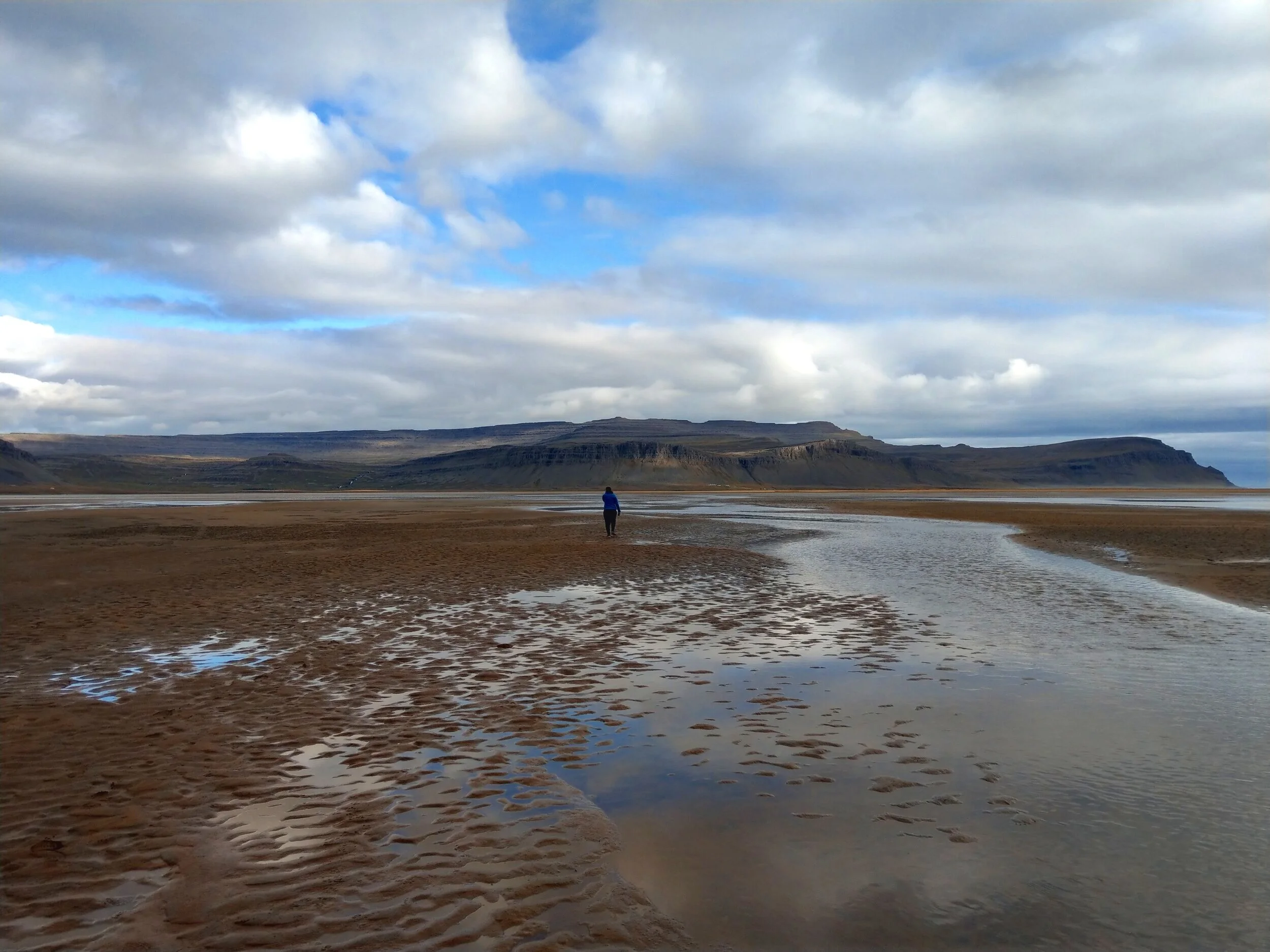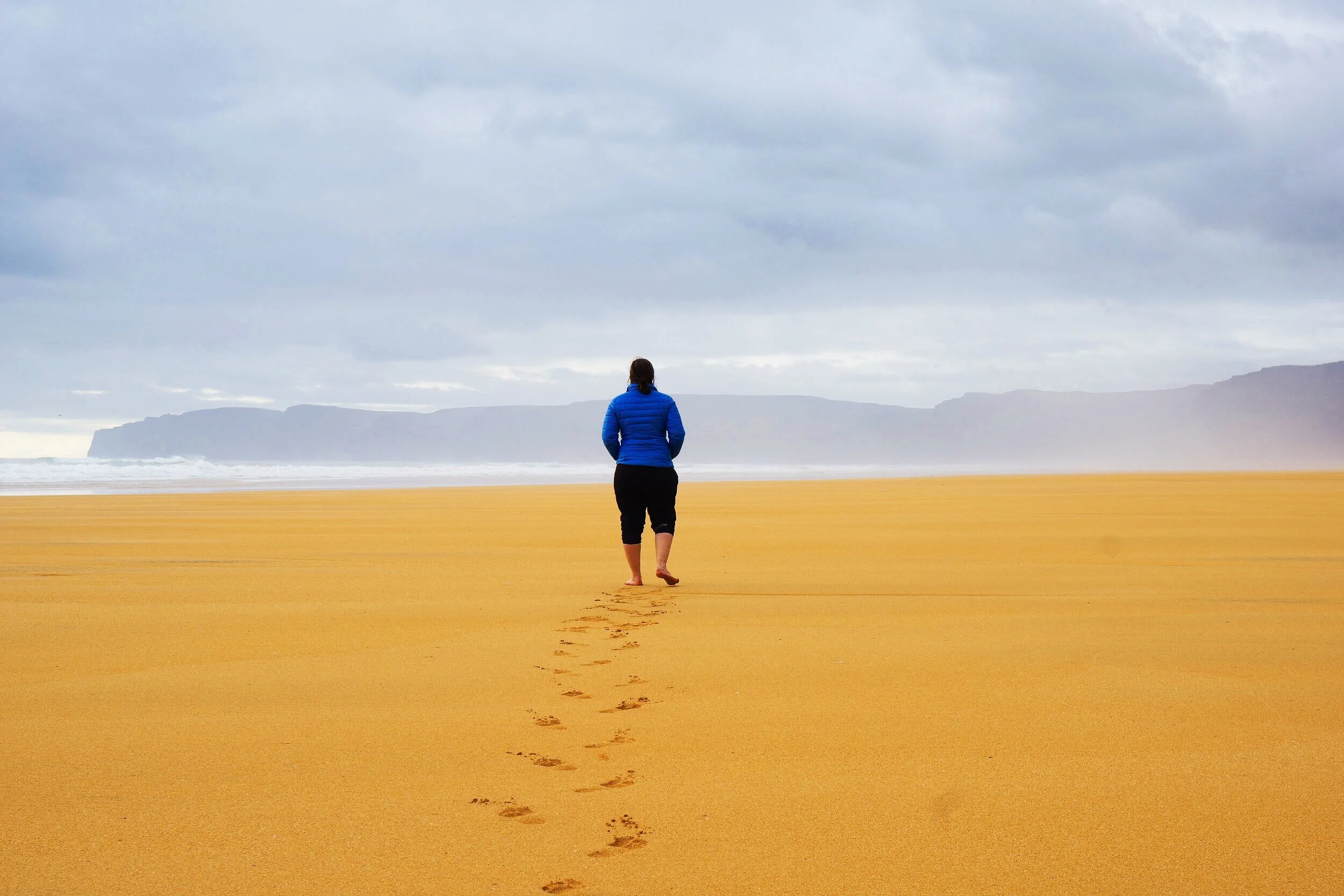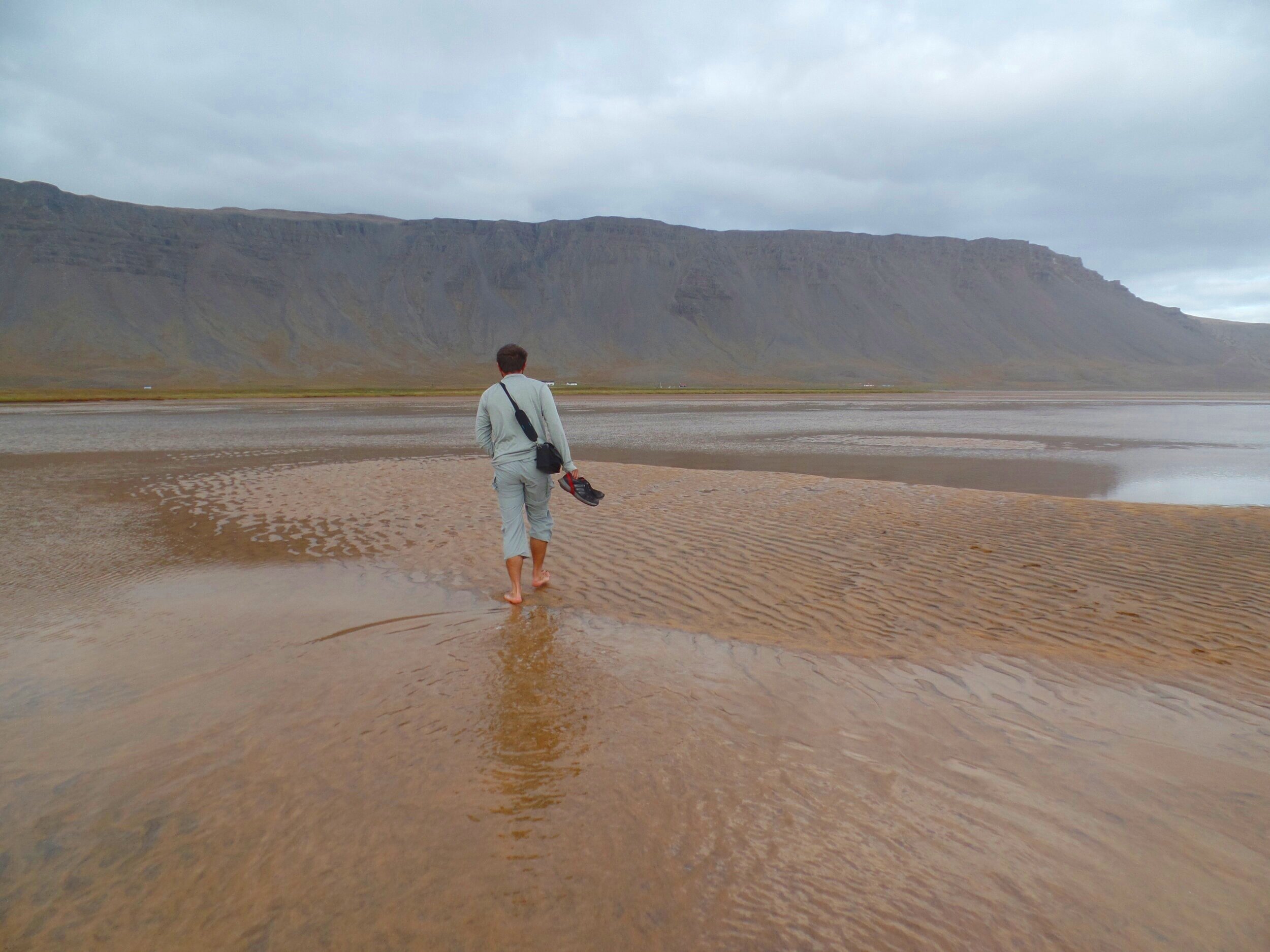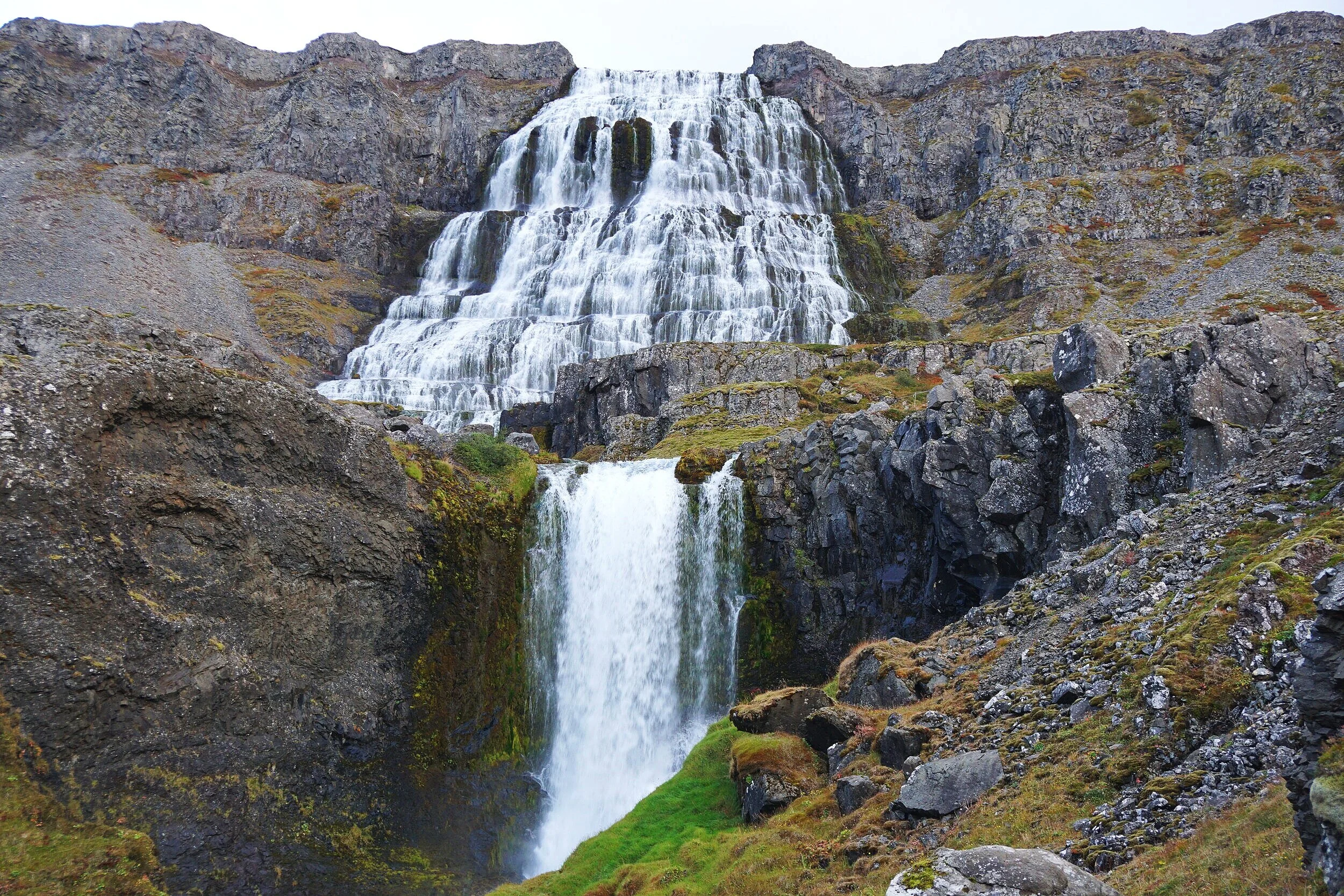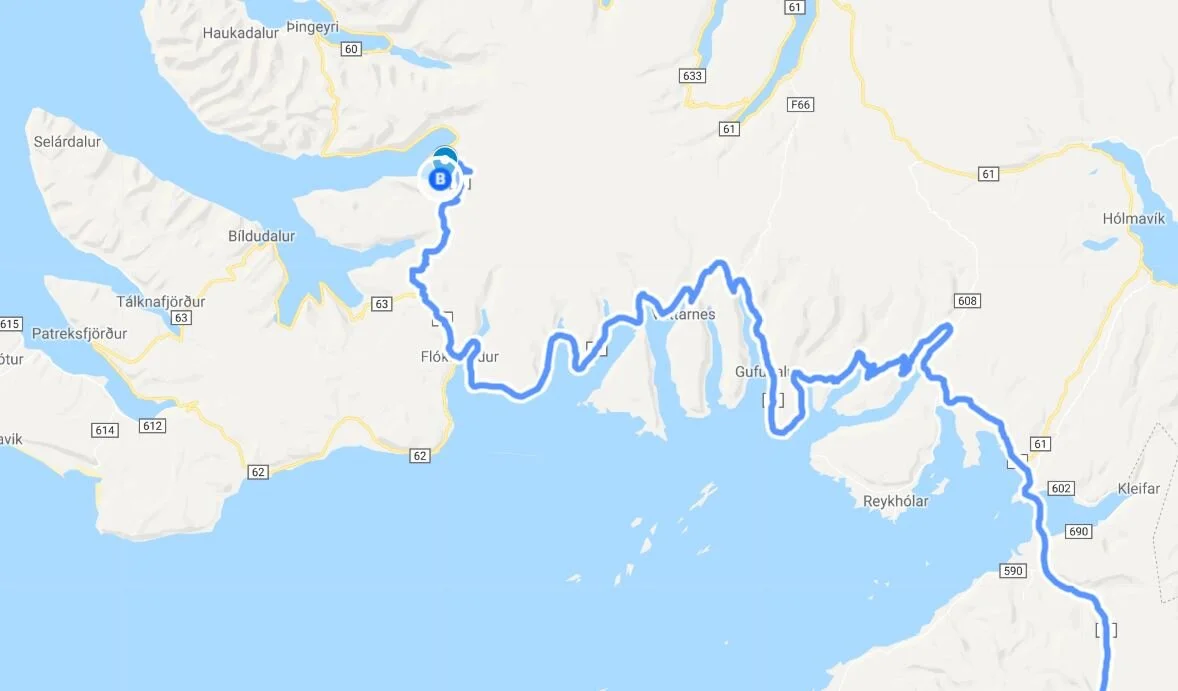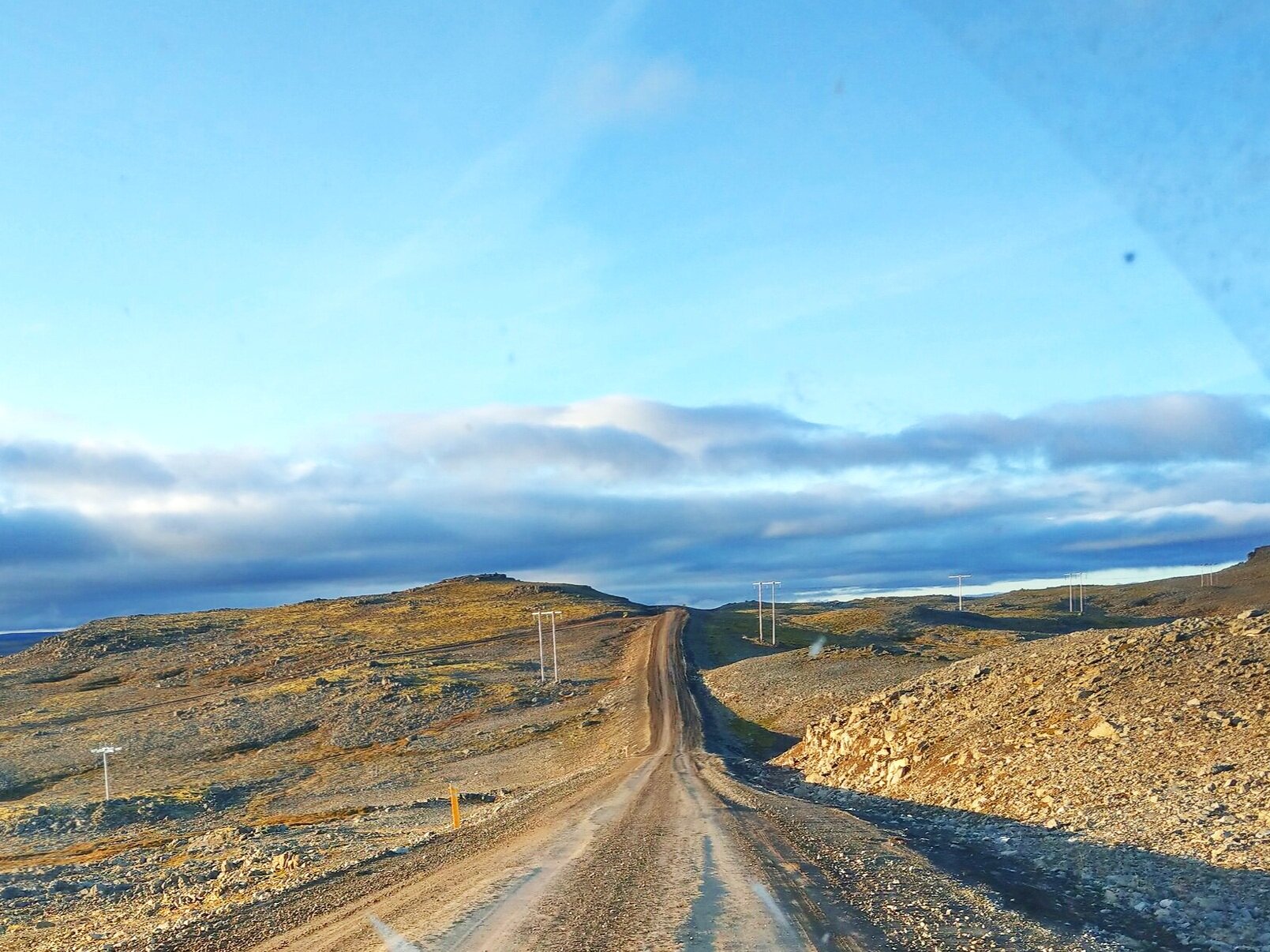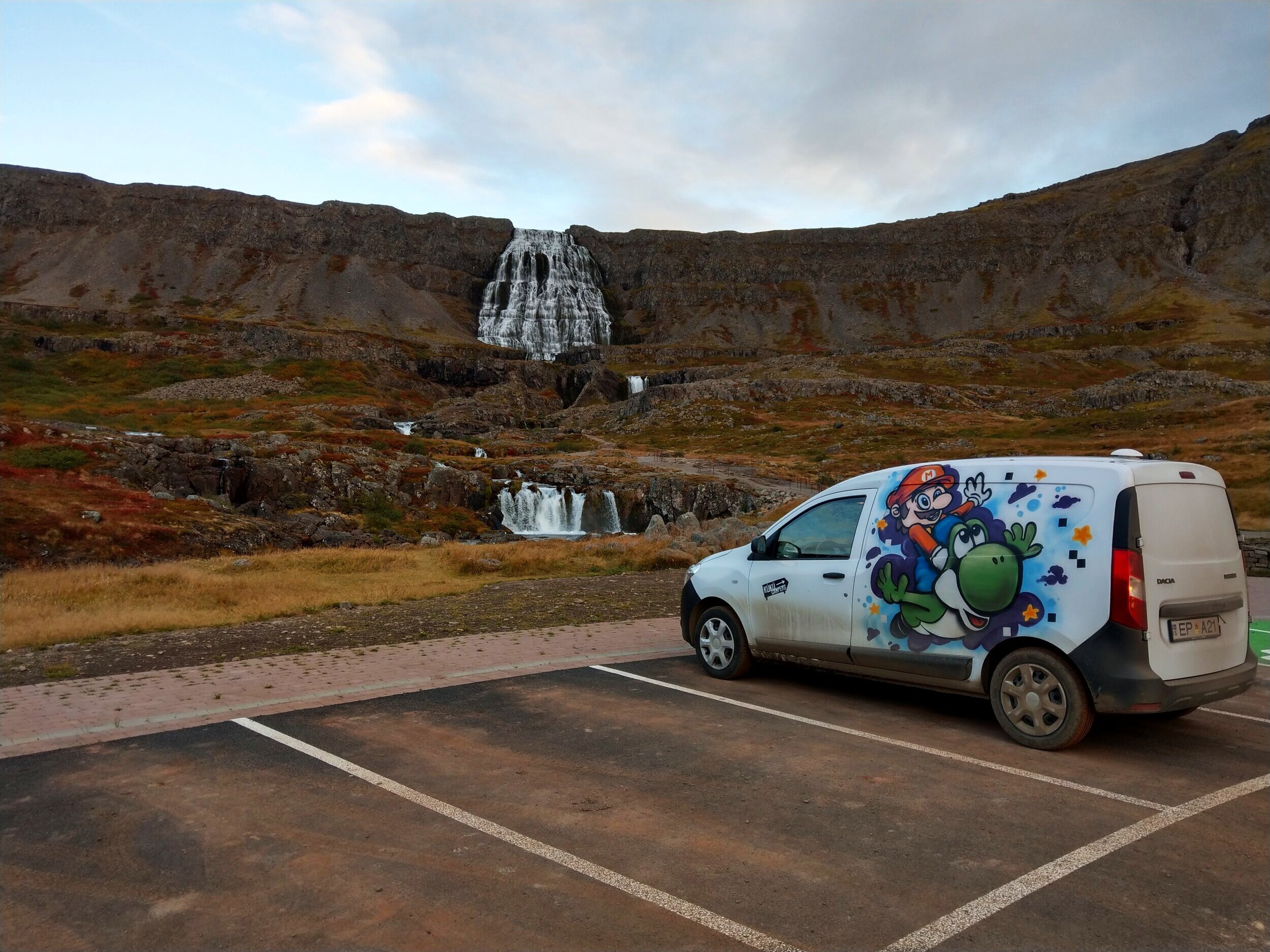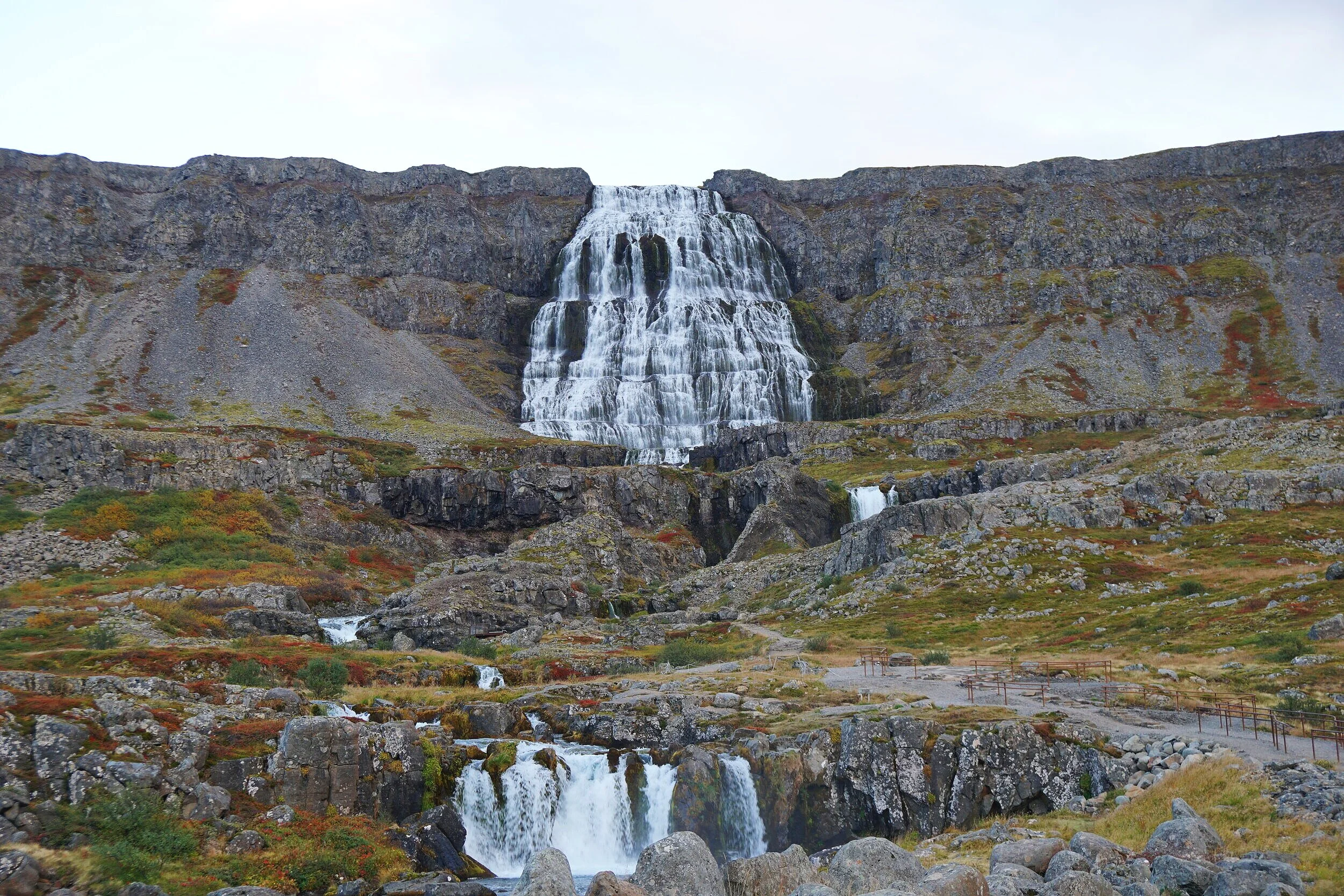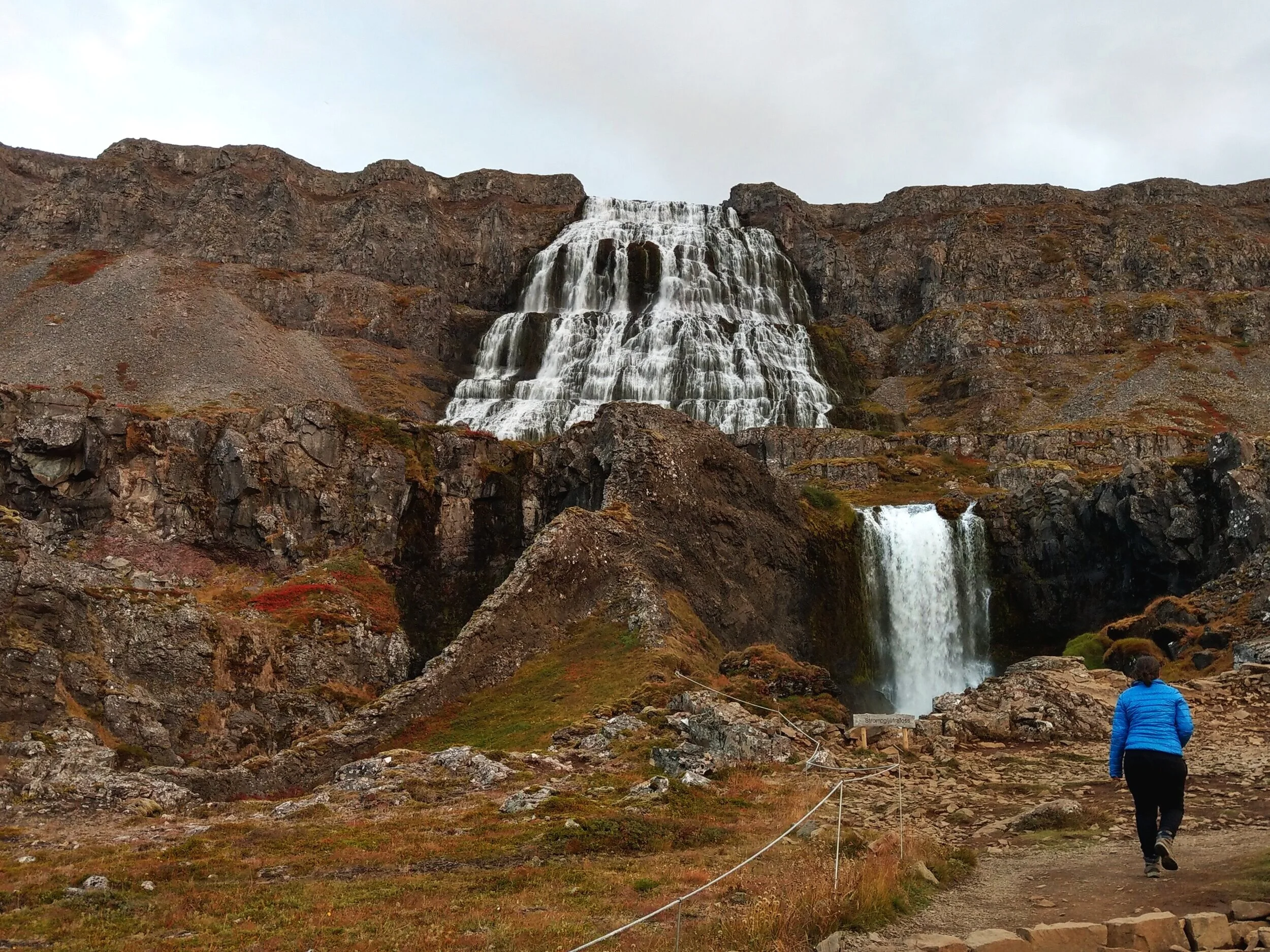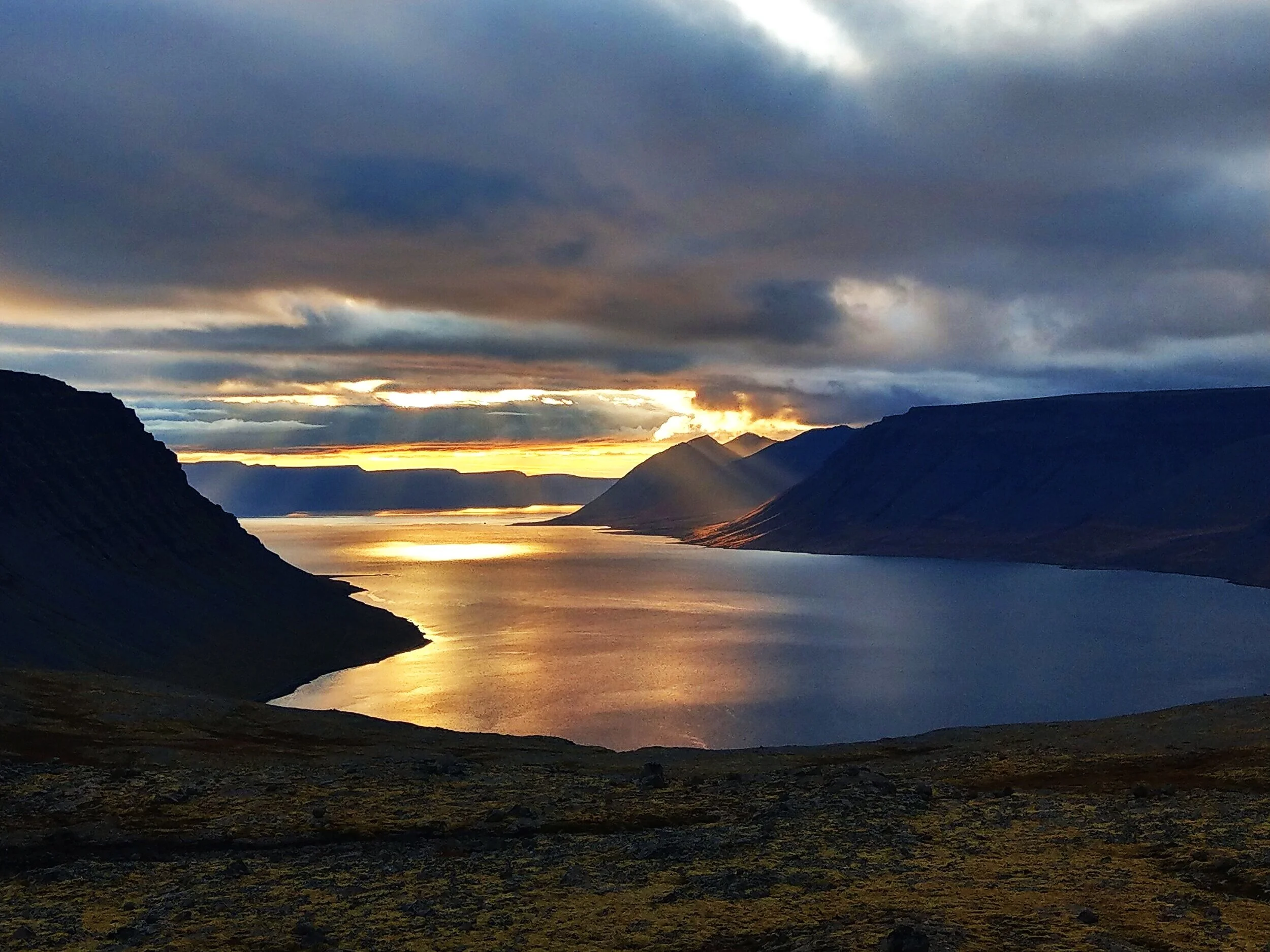How to Visit Dynjandi and Rauðasandur in the Westfjords: Two Bucket List Places in Iceland’s Most Remote Destination
On the first trip to Iceland, many people head for the Blue Lagoon, the Golden Circle, the South Coast, and around the Ring Road. And all of these are certainly worthy of your time. But, if you’re looking for an off the beaten path adventure in Iceland, with true wilderness and zero crowds, head to the Westfjords.
The Westfjords are a remote and rugged peninsula off the northwest corner of Iceland. The vast landscape features dramatic mountain scenery around every turn, with long winding roads, and villages and towns few and far between. In fact, its remoteness and distance from Reykjavik and other major tourist attractions make the Westfjords the least visited place in Iceland!
We made an overnight stop in the Westfjords on our journey around the ring road. And while an overnight trip is barely enough to scrape the surface of everything the Westfjords has to offer, we did manage to see two beautiful hidden gems of Iceland…Dynjandi and Rauðasandur.
Don’t let the unpronounceable names fool you, these two gems are well worth a visit to the Westfjords…
Dynjandi is a giant and incredibly picturesque waterfall in the southern part of the Westfjords of Iceland. Often called the jewel of the Westfjords, Dynjandi has a majestic quality that makes it a favorite among many Icelanders (and that’s saying something…given the hundreds and hundreds…and hundreds…of waterfalls all over the country!). It was definitely one of our favorites, too!
While Iceland is pretty famous for its unique black sand beaches, particularly along the southern coast, Rauðasandur in the Westfjords is super unique because of its red sand…yes, red! A visit to this incredibly remote 10 km long beach will leave you feeling like you are truly in the middle of nowhere (which you are!) and maybe even on a different planet…
If the Westfjords is on your Iceland bucket list (and it should be!), a visit to both Dynjandi and Rauðasandur should not be missed. In this post, we’ll tell you everything you need to know about visiting these two hidden gems in the Westfjords of Iceland – where they are, how to get there, where you can stay, and we’ll even give you some more ideas on other awesome nearby places to visit.
If it’s just a detour off the ring road, like we did, or a long road trip from Reykjavik, we want to help you plan a perfect visit to the Westfjords.
Oh, and feel free to jump around! Here’s what we’ll cover:
Article Contents:
Where are the Westfjords?
The Westfjords refers to a massive peninsula on the western side of Iceland. It’s known for its remote and rugged landscapes. When you’re here, you’ll be driving down long, isolated roads that weave in between the fjords, go up and over mountain passes, and pass through small coastal villages.
Below is a map of the Westfjords, showing the location of the two destinations, Dynjandi and Rauðasandur, that we will be describing in this post.
The Westfjords are the ultimate place to visit in Iceland if you want to truly go off the beaten path and escape the tourist crowds.
The catch? To get here, it does take some time and effort. Most visitors to Iceland choose not to venture into the Westfjords simply because it’s so out of the way from any of the other tourist attractions. Even from the ring road, it takes several hours to get to any places of interest within the fjords. Often on their first trip to the country, people spend their time visiting more touristy well-known places, and save the Westfjords for another trip when they have more time to devote to this vast area of Iceland.
Our experience: We did a trip around the ring road, starting along the ultra-popular and touristy south coast and heading counterclockwise. So, we visited the Westfjords during one of our last days in the country. Basically, the further into our Iceland road trip we got, the thinner the crowds became.
And when we got to the Westfjords, we saw only a handful of other people.
It was quite a difference between the start and end of our trip, and in a good way. As beautiful and stunning as all the popular tourist attractions are (let’s face it, they are popular for good reason), it’s so great to just get off the beaten path and experience the true wilderness of Iceland without worrying about finding a parking spot or weaving through crowds of people.
We’re guessing you’re interested in putting a visit to the Westfjords on your Iceland itinerary….so let’s get into the logistics, shall we?
How to Get to the Westfjords in Iceland
There are three ways to get to the Westfjords – driving, flying, or taking a ferry. Driving is, by far, the most common way to get to the Westfjords, so let’s start there.
Driving to the Westfjords
Driving to the Westfjords is an adventure in itself. This area used to be known for rough difficult roads that made it highly inaccessible, but the good news is that driving in the Westfjords is not as bad as it used to be. Recent improvements to the roads in the Westfjords means many of the roads are actually now paved, and there are new bridges and tunnels to bypass particularly rough areas or cut across fjords instead of winding in and out of them.
This doesn’t mean there are no rough roads in the Westfjords, though. There are still some rough gravel roads, especially going into the most remote parts of the fjords, and there are even some gravel portions along the main roads that you need to be prepared for and use caution on. Wherever you are driving in the Westfjords, still expect long hours in the car through winding fjords, over mountains passes and down gravel roads with potholes and washboarding. Which brings me to my next point…
What kind of car do you need to drive to the Westfjords?
Actually, a regular 2 wheel drive car is sufficient for driving in the Westfjords because most roads, even gravel roads, are accessible with this, at least in the summer months. You do not need a 4x4 to drive in the Westfjords. There are only a few F roads in the Westfjords requiring a 4x4 vehicle, so unless you plan on venturing to super remote places down these rough F roads, you can use a 2 WD car.
With that said, even on the main roads you’ll likely be driving over gravel and stone that can get a bit rough, with potholes and washboarding, sometimes while going up and over passes between the fjords. Many people might feel more comfortable or prefer a 4x4 in these cases.
We personally traveled through the southern portion of the Westfjords using our 2 WD campervan and had no issues. However, some gravel parts of the road were slick, and we rushed out the next morning to beat the impending rain because we were a little nervous about the road being wet in our little campervan with tires that didn’t have the greatest tread. Our suggestion would be to avoid driving here if it’s wet or raining.
In the end, it’s really a matter of your comfort level, but, just know that if you don’t have a 4x4, don’t completely discount a visit to the Westfjords because, in the summer, most roads are freely passable to all types of cars.
We’ll go into more details about the roads to get to both Dynjandi and Rauðasandur when we talk about each of these places more in bit.
Can you Drive to the Westfjords in the Winter?
Like all places in Iceland, you will want a 4x4 to drive to the Westfjords in the winter, as the landscape is covered in snow and roads can be dangerous in wintery conditions. Many roads are regularly serviced and stay open throughout the winter, but some roads either aren’t cleared of snow regularly or close completely, and some portions of a few main roads close.
And no matter what time of year you drive to the Westfjords, always monitor the road status.
How Long Does It Take to Get to the Westfjords?
Like we said above, driving to the Westfjords takes a while. Here are the driving times and distances to get to both Dynjandi and Rauðasandur from a few places in Iceland:
To Dynjandi from:
Reykjavik: 5 hours, 10 minutes / 361 km
Akureyri: 6 hours, 20 minutes / 480 km
To Rauðasandur from:
Reykjavik: 5 hours, 30 minutes / 400 km
Akureyri: 6 hours, 40 minutes / 515 km
Other Ways to Get to the Westfjords
If you aren’t up for the long drive to the Westfjords (and hey, we don’t blame you!), you do have other options.
If you are already planning on visiting the Snaefellsnes Peninsula off the west coast of Iceland, you can hop on the ferry that runs between Stykkishólmur on the Snæfellsnes peninsula and Brjánslækur in the Westfjords. It’s surprisingly low cost (less than $50 USD per person one way), and is a great way to shave off some driving time (you can take your car on the ferry for an extra fee). Learn more about the Westfjords ferry here.
For less than $100 USD one way, you can even take a local flight from Reykjavik to the Westfjords. Check out Air Iceland for daily flights to and from Isafjordur.
Look into more options for getting to the Westfjords here.
Alright, let’s get more specific about visiting our two must-see destinations in the Westfjords – Dynjandi and Rauðasandur.
How to Visit Rauðasandur
If you started out your Iceland trip along the popular south coast, you’ll probably already be familiar with the black sand beaches that Iceland is so famous for. And this will make Rauðasandur in the Westfjords that much cooler!
Because unlike its famous counterparts, this beach is a red sand beach! Okay, it might not be truly red. We think it has more of a golden hue to it. But we also were there on a cloudy day and we’re sure the colors would be even more brilliant if you can manage to catch it when the sun is shining (good luck!).
Regardless of its specific coloration, a visit to the red sand beach in the Westfjords is still worthy of your time, in our opinion.
Why? It’s something completely different, and something unique to see during your trip to Iceland. It’s also a huge beach. It’s a stretch of 10 km that sits under the famous Latrabarg Cliffs of the Westfjords. But it’s not only long, it’s wide, and very flat with scenic cliffs bordering either side. This combined with its reddish golden hue will leave you feeling like you’re at a beach on Mars.
Finally, this place is truly remote. You’ll likely be alone, or see only a few other people. We had the beach completely to ourselves, and knowing we were wandering through a place that few people see added to the mystique and allure of this place.
It was a long drive to get to this place, but it was worth it!
How to Get to Rauðasandur
Below are maps showing how to get to Rauðasandur. On the left is the general location of Rauðasandur in the Westfjords and the overall route from the ring road, and on the right is a close up view of the route to Rauðasandur and the specific roads you’ll have to take, which we’ll describe below. You can click on each for a larger picture.
To get to Rauðasandur, you’ll take route 60 off the ring road and follow it allllll the way into the Westfjords. This road starts off well paved, and winds its way in between the fjords.
Eventually, it becomes gravel as it traverses up and over a mountain pass via switchbacks. The road here is pretty smooth, and we had no problems driving this with our 2WD campervan. However, we wanted to be sure to make it through this section the next day on our way out before the forecasted rain came through, as there are some hairpin turns going down the pass and we didn’t trust our slick tires in wet conditions.
After a short stretch over a few passes, the road becomes paved again.
You’ll drive down route 60 until you hit Flokalunder. Here, you’ll continue on route 62, deeper into the fjords. Next, look for the turn for route 612. You’ll circle around a fjord and pass the Gardar BA 64, an historic ship that ran aground.
Finally, you’ll take a turn onto route 614 for the final 15 km stretch to Rauðasandur. 614 is a gravel road that’s a little rougher and rockier than the gravel portion on route 60, but still doable for a 2WD car.
Here, you can see the split onto route 614, the dirt road that begins weaving up onto the hillside.
Just as a warning: The final portion of the road to Raudasandur descends down to the beach via a few tight switchbacks with hairpin turns along steep cliff sides. It’s a little nerve wracking for those intimidated by heights (and some have said that this is the most frightening road in the Westfjords), but it’s a short section and you get awesome views of your red sand beach destination as you weave your way down.
At the bottom of the switchbacks, you can take a left, which will lead you to the Melanes campsite right along the east end of the beach. We took a right, which led us down a flat dirt road to a parking lot right beside a small black church. From here, you can get access to the red sand beach.
Visiting Rauðasandur
Once you park at the church, you’ll see a path through the tall grass leading towards the beach. The sign says it’s a 1.5 km walk, but we’re not sure what point this is to…we didn’t map or time this walk but it’s probably a little bit longer than that if you want to go all the way across the beach and near the water. But it’s completely flat and you can go as far as you’d like.
Through the grass, there are a few herd paths you can follow that will lead you towards the beach. And you might come across some sheep friends along the way (our time here was extended considerably because of my obsession with these guys and my need to photograph them).
You’ll eventually come out to the edge of the beach. The sand here is more of a golden brown, and gets “redder” as you walk closer towards the water.
Tip: Try to remember some landmark here to remember where you came out of the grass and onto the beach so that you can make your way back here when you’re done wandering around on the beach.
The issue at this first part of the beach is that there are several large tide pools that you have to wade through to go any further along the beach.
My attempt at an epic puddle jump!
Many people stop here and turn around. We debated for a while (and I mean a while), but we came all this way to experience this beach, so gosh darn it we were doing it! We took off our shoes and socks, hiked up our pants, and waded through the puddles. And let me tell you, the water was freezing.
But, after a few of the puddles, we got used to it (or maybe our feet just got too numb to feel the cold anymore…). We suggest, if you can, bringing some water proof shoes or rain boots to wade through these puddles with.
The tide pools end and it’s a straight shot out towards the water. We recommend not getting too close…Iceland is notoriously known for its “sneaker waves”… large, powerful, unpredictable waves that can be super dangerous if you’re too close. We went up to a safe distance and admired the views around us.
The sands here were smooth and at their most red color, and we could no longer see the road or our car behind us. It was just a vast expanse of red sand. There was absolutely no one else there, and we reveled in that for a little bit. The crowds we experienced the previous week and a half around Iceland certainly made us appreciate this moment all the more.
Once you’re done, you can return the same way you came.
TIP: Watch out for the occasional jellyfish hiding in the sand!
How much time Do you need to visit Rauðasandur? All in all, we ended up spending about an hour and a half at Rauðasandur between the walk out and back and just hanging out on the beach. We would say that should be the minimum time to estimate when planning your Westfjords itinerary.
How to Visit Dynjandi
Next up…Dynjandi!
Dynjandi is one of the best hidden gems in Iceland. It may not be the tallest waterfall in Iceland, or the most powerful, or the bluest, but there’s just something about it that draws you in. And trust us, as two people who actually got kind of waterfalled out (apparently that’s a thing and I didn’t think it was actually possible, but in Iceland, it is…) during our two week trip around Iceland, Dynjandi was still absolutely amazing despite it being the last of a bajillion falls we saw during our trip.
The main falls gracefully cascades down increasingly wider tiers, so that it’s width at the bottom is exactly twice its width at the top, giving it a unique and picturesque look. And even though Dynjandi itself gets all the attention, and rightfully so, the water continues to flow down a series of smaller falls that you pass on your walk up to the base of Dynjandi.
So, it’s like 8 for the price of one. Score!
How to Get to Dynjandi
Below is a map of the route to Dynjandi from the ring road.
To get to Dynjandi, you’ll drive into the Westfjords along route 60, just as you did for Rauðasandur. However, when you reach Flokalundur, you’ll continue on 60 instead of turning onto 62. You’ll drive another 30 miles on 60 until you reach Dynjandi.
This stretch of road becomes gravel, and was the roughest of all the gravel roads we drove on in the Westfjords, though still manageable for a 2WD car (although the middle portion got slick and slippery and required a bit more focus).
The final portion of the drive has you weave your way down into the base of the fjord where Dynjandi sits. At the bottom, you’ll make a left towards the waterfall, with the road ending in a surprisingly nicely paved parking lot.
IMPORTANT NOTE: Dynjandi is one of those places that you cannot visit in the off season. The gravel section of route 60 between Flokalundur and Pingeyri is one of those portions of roads that closes and is not serviced for snow clearance. So, between roughly October and April, Dynjandi is inaccessible.
Visiting Dynjandi
At the parking lot, there are bathrooms with a little picnic area and a dish washing station. And apparently there is also a campground there, although we didn’t see anyone camping. In fact, there weren’t many people here at all in general.
You can see Dynjandi perfectly from the parking lot, but you can get even closer. It’s a quick 10 minute uphill walk along a series of smaller falls to get to its base.
The path is clearly delineated with ropes. It’s mostly dirt, and at times can get a little bit rocky. There are lots of stairs, either carved from rocks or dug into the dirt and reinforced. The walk is never boring, as you pass by 7 smaller but super scenic falls cascading down towards the ocean behind you, but have the majestic Dynjandi falls in view ahead the entire time.
At the top of the climb, you’ll come out to a flat rock platform right at the base of Dynjandi. And, just wow. The name Dynjandi literally means thundering noise, and you can feel its power as you stand up close.
One of my favorite parts, though, was the view out from Dynjandi. While Dynjandi itself gets all the attention here, my favorite part was looking back out towards the water. Dynjandi sits in the innermost point of a fjord, and the views were unexpected and almost as equally stunning as the falls themselves.
This is the view back into the fjord from the drive in to Dynjandi! What a killer sunset, huh?
How much time do you need to visit Dynjandi? We spent about an hour here, although we could have stayed much longer admiring the views. We got to Dynjandi late, about 8 pm, and we wanted to get back to our campsite before dark settled in, so we were in a rush.
Other Things to Do in the Westfjords
We hear ya, it’s quite an effort to get all the way out here to the Westfjords, and you want to take advantage of the time you have to spend here! While Rauðasandur and Dynjandi are two must-sees during any visit to the Westfjords, in our opinion, there are definitely so many more cool places to go!
The Latrabjarg Cliffs are only about an hour past the turn off for Rauðasandur beach. These are tall abrupt cliffs marking the westernmost point of the country. But what people come here for are the puffins! Between the months of April to mid-August, these cliffs are home to one of Iceland’s largest puffin colony! Unfortunately, we were here just after the puffins left for the year, so we didn’t venture out here.
If you’re really looking to be on your own, try checking out the Hornstrandir Nature Reserve, the very northern edge of the Westfjords. This place is incredibly remote and pure wilderness. The big draw is the high chance of seeing an arctic fox! The reserve is primarily accessible by boat and most people visit with a guided tour.
Aside from natural attractions, there are several small villages worth making a stop in on a road trip through the Westfjords. Isafjordur is often considered the “capital” of the Westfjords, as it is the most populated town in the region, and many people chose to stay here as a base. Check out all the things to do in the Westfjord villages here.
If you’re looking to do a Westfjords road trip and visit most of the attractions the region has to offer, check out this awesome Westfjords road trip itinerary for ideas and a general timeline!
And take a look at some more ideas for things to see and do along the way.
Where to Stay in the Westfjords
There are tons of options for accommodations in the Westfjords, whether it be camping or hotels.
There a several campgrounds to choose from near attractions or in the various villages along the fjords. To find a campsite along your route, check out this awesome website that will detail everything about campgrounds in the Westfjords.
If camping’s not your thing, check out this site for a ton of options for other accommodations in each region of the fjords.
We want to hear from you!
The Westfjords in Iceland are truly a beautiful and wild place, and we hope that you get to add this remote region to your Iceland itinerary. Let us know if you have any questions about visiting Dynjandi or Rauðasandur…we would love to help!
